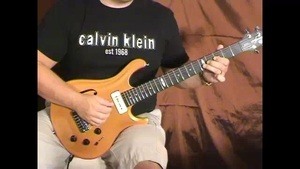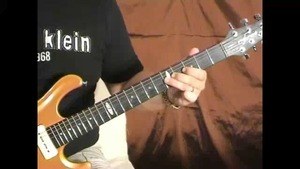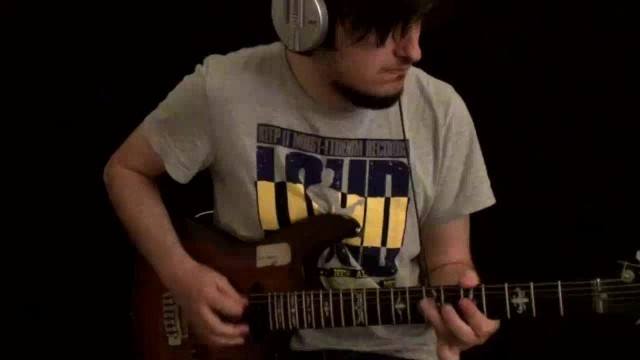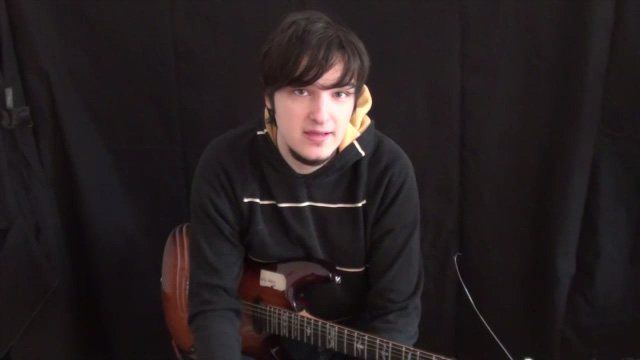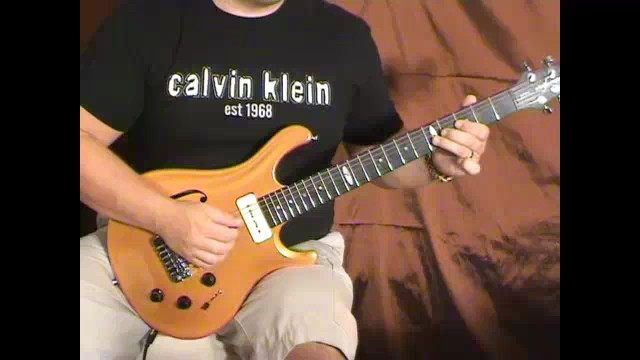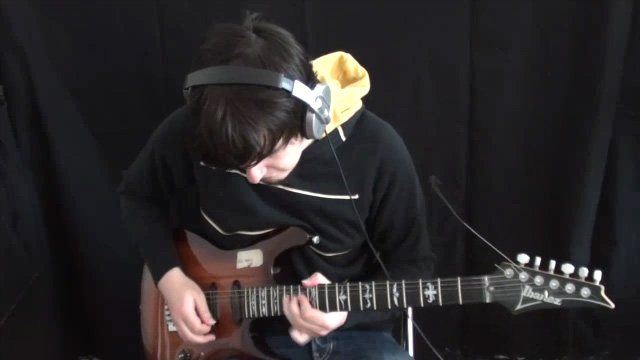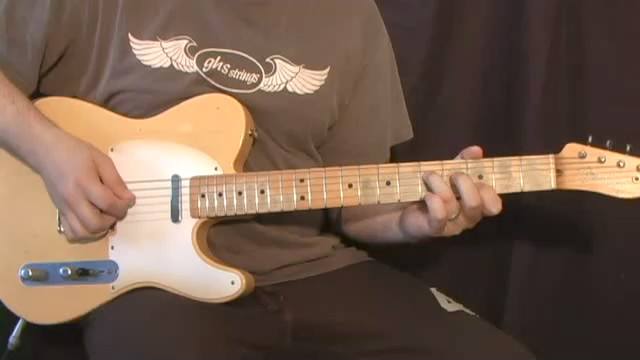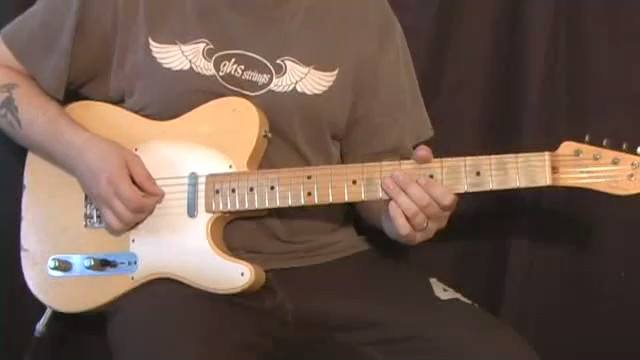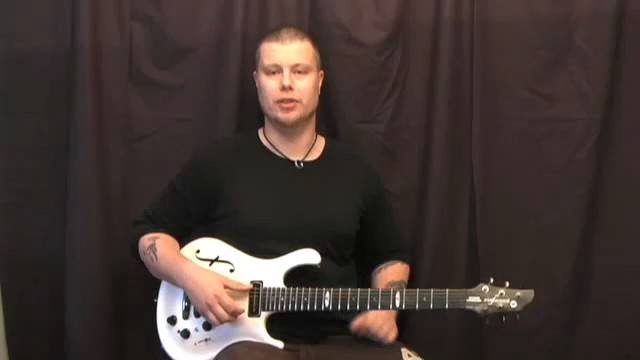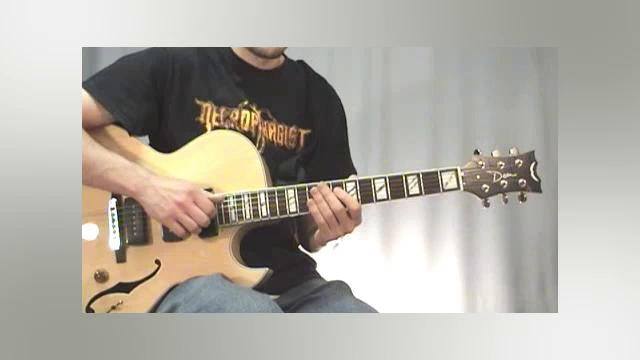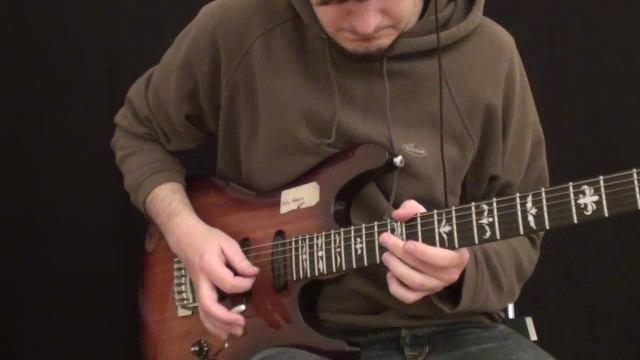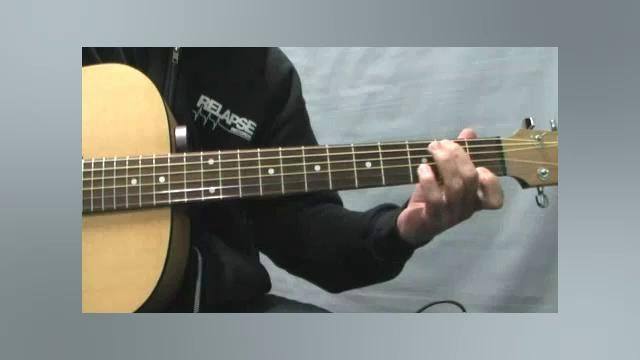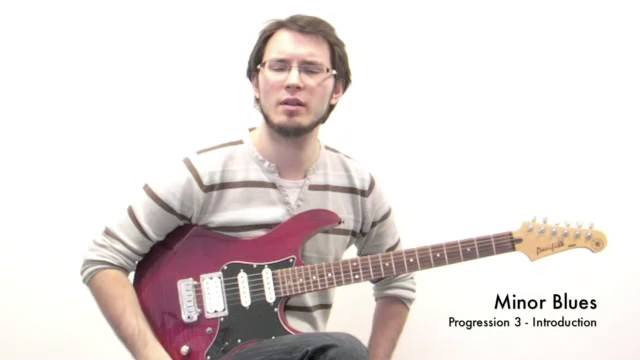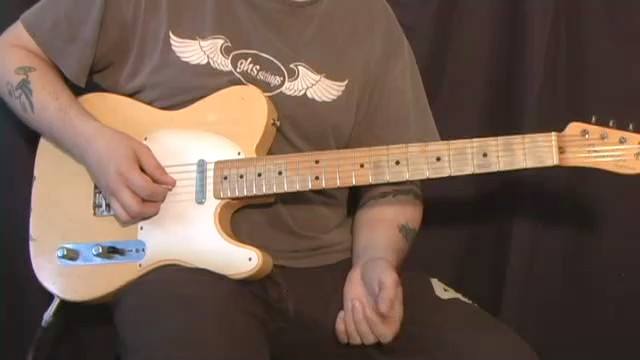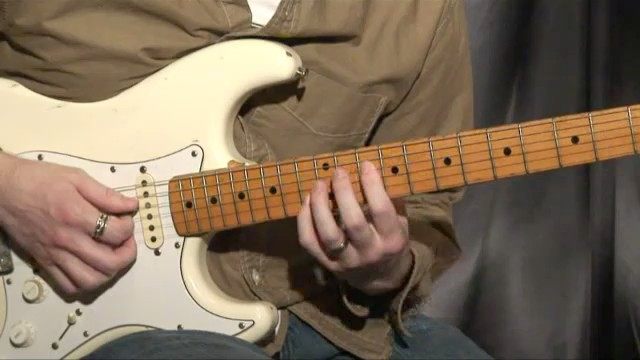OK, lets take a look at the solo!
Actually, before we look at the solo, the first thing you'll want to do is familiarise yourself with the chords marked in the notation below. We have:
G7 - C7 - D7
These chords form the I - IV - V of a major key with one big difference: they are all DOMINANT chords.
If these chords were all diatonic, we could use the same scale throughout the whole progression but in this case, one needs to be aware of the function that dominant chords play in relation to modulation.
To start with, I want to concentrate on targeting chord tones themselves as opposed to learning the scales that we can use over each dominant chord. By targeting chord tones, we can reinforce the sound of the underlying chord or key making the phrases that we play more coherent
Bars 1 - 8
The root of the G7 chord is the main focus of bars 1 - 4 and although the b7 does occur during bars 1-2 it doesn't really come into its own until it makes another appearance at the end of bar 4. Notice how it wants to resolve itself down a half step to the e note in bar 5 which is the 3rd degree of the C7 chord and which makes its appearance in the first beat of bar 5. This helps to reinforce the sound of the change from G to C. When the change from G to C occurs, the b natural changes to b flat. This is one of the most important changes within the whole progression and it is outlined here during bars 5 - 6. Pay close attention to it.
In bar 8, notice the change back to G with the presence of the b natural again which, again reinforces the sound of G as it is the major third degree.
Bars 9 - 12
The figures in bars 9 - 10 really just outline the essential tones of each underlying chord again reinforcing the sound of each chord change and bars 11 - 12 focus on the root of chords G and D as they occur.
OK, I hope that has helped you and all that remains is to move onto the backing track and get practicing.
Best of luck!

